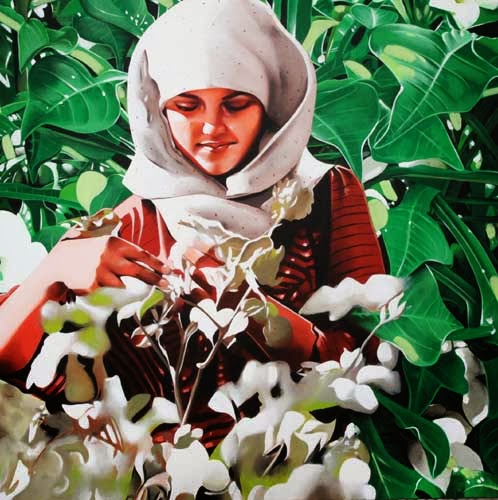Binoy Verghese
Oil on canvas
Untitled
The total celebration of burqa happens in Binoy Verghese’s works. He paints the images of burqa clad women against flowery background. Most of these women are from disadvantaged situations. They come from slums. They move in the streets. They move in groups and at times their innocence is beamed through their partly revealed faces. From the bottomless pits of insecure lives, they smile at the world, as the flowers in the background smile at the viewer. Binoy may be a romantic when it comes to aesthetic approach. However, he does not make burqa as an emblem of conflict. While there are innumerable ways of depicting a Muslim woman symbolically, Binoy’s choice of burqa clad women/children has to be noticed.
Binoy’s interest is in the identity of these women/children, even if they are disempowered and thrown to streets. Burqa does not become a burden for them as they flaunt the way flaunt their partly veiled beauty. He does not make their body desirable in an erotic sense, but he attributes them with a sort of dignity that evokes curiosity amongst the viewer to know more about them. For Binoy, burqa is a way to suggest an irony; the irony of sending those supposedly honored human beings to streets as if they were flocks of sheep destined to graze under the shadow of charity. The critique becomes stronger as their veiled images are seen set against the gardens/nature, which is said to be most free spaces in the world. Binoy plays between the given and the suggested, the way the hoardings of jewelries and burqa shops do in the public imagination.
courtesy: Johny ML

No comments:
Post a Comment